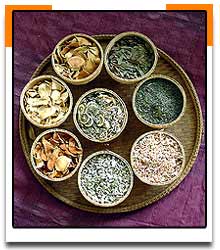I wrote this article for a South African pregnancy and baby magazine in 2000.
The Essence of Motherhood
~ Aromatherapy for pregnancy, mothers and babies ~
By Jane Fraser (Weideman)
As you begin journeying toward the creation of new life, explore the joys of beautifying and caring for yourself. Pregnancy is a very special time in a woman’s life. It’s a time to nurture and care for the body and mind, for the benefit of yourself, as well as that of your unborn child. A healthy mind and body throughout pregnancy can help to lead to a healthy labour and birth, and therefore a healthy happy baby.
Aromatherapy has been found to be greatly therapeutic during this special time, and can be used on a regular basis throughout the childbearing year to ease discomforts, alleviate emotional stress and maintain health and beauty.
Aromatherapy is the fragrant art of using especially selected aromatic oils for therapeutic purposes. The essential oils are extracted from odiferous plants, roots, seeds, flowers, gums and resins. All of the essential oils have many healing properties. They are mixed into a carrier oil to dilute them and they are absorbed directly into the skin and so into the bloodstream. The most commonly used carrier oils are Sweet Almond Oil or Grape-seed oil.
Pregnancy can bring on discomforts, many of which arise from ordinary fluctuations and bodily changes. Some call for dietary or lifestyle adjustments. Most can be eased with the additional use of essential oils.Discomforts caused by nausea, headaches, morning sickness, haemorrhoids, varicose veins, dilated veins, insomnia, chloasma, acne and stretch marks all respond well to aromatherapy treatment.
 Touch is a profound part of your sensory experience. A daily massage can activate millions of nerve receptors, regulate and balance bodily functions, and send a message of love and care to your baby. Self-massage is one approach; massage by your partner another. Massage is a lovely way for the fathers to be involved in pregnancy and to get to know their babies.
Touch is a profound part of your sensory experience. A daily massage can activate millions of nerve receptors, regulate and balance bodily functions, and send a message of love and care to your baby. Self-massage is one approach; massage by your partner another. Massage is a lovely way for the fathers to be involved in pregnancy and to get to know their babies.
Aromatherapy massage has also proved to greatly reduce the incidence of episiotomies, or tearing when perineal massage has been performed daily in the weeks prior to birth. With daily massages of this sort the perineum is likely to remain highly elastic – and intact – during birth. If tearing does occur swabbing the perineal area with warm water containing lavender oil, will prevent infection, aid healing, and help to stop bleeding.
Aromatherapy is being increasingly endorsed by midwives throughout the world, and is gaining acceptance in hospitals in Europe and the United Kingdom. German midwives are required to study aromatherapy as part of their course curriculum.
Whether you are planning to birth your baby in hospital, at a birthing center, or at home you can incorporate aromatherapy into your birth experience. Plan on creating a magical birthing environment, complete with soft lights, music and your favourite essential oils. Neroli, Nutmeg, Rose, Clary Sage and Geranium can help relieve anxiety and fears you may be harbouring about birth. Breathing in any of these oils as they waft through the air from your diffuser will help you relax between contractions, and stimulate your body to produce endorphins to provide natural pain relief.
 Lavender can also promote relaxation and pain relief during labour. Once your contractions have established a regular pattern and your cervix has dilated at least 2 centimetres, plan on taking a long lavender soak. Women who bathe for 30 minutes or more during this phase of labour experience improved progress and a significant decrease in the need for drugs. Cool compresses to the forehead can help ward off fatigue and keep you refreshed. If nausea crops up, take a whiff of peppermint or lavender oil.
Lavender can also promote relaxation and pain relief during labour. Once your contractions have established a regular pattern and your cervix has dilated at least 2 centimetres, plan on taking a long lavender soak. Women who bathe for 30 minutes or more during this phase of labour experience improved progress and a significant decrease in the need for drugs. Cool compresses to the forehead can help ward off fatigue and keep you refreshed. If nausea crops up, take a whiff of peppermint or lavender oil.
The Essential Oils each have their own unique properties, and purposes. It is important to select the correct essential oil based on the required treatment.
Certain Essential oils should be avoided during pregnancy, these are the so called Emmanegoge oils, which encourage and regulate menstruation; these include Basil, Clary Sage, Juniper, Fennel, Camphor, Cypress etc; and Abortifacient oils, which could cause miscarriage; these include Aniseed, Basil, Star Anise, Sweet Birch, Tarragon etc.
It is generally recommended to avoid using Essential Oils during the first trimester, but thereafter it is safe to use those Essential Oils, which are beneficial during pregnancy. These include:
– All the citrus oils (Lemon, Grapefruit, Orange, Lime, Petitgrain, Mandarin, Neroli, Tangerine and Bergamot).
– The exotic oils of Vetivert, Geranium, Ylang-Ylang, Jasmine, Chamomile, Pine, Rosewood and Lemongrass.
– Other oils can also be used to treat specific conditions, but only in small amounts and not at all on very sensitive skin. A qualified aromatherapist should prescribe these.
It is recommended to seek the advice of a trained aromatherapist before experimenting with Essential Oils, or use specially blended oils, which have been prepared specifically for pregnancy and labour.
** Medical disclaimer: Note that this web site is not a substitute for medical advice. The content provided here is for informational and educational purposes, and is not intended as advice or instruction. It is provided to help you to make informed choices for yourself. You should consult your primary care provider regarding your specific medical symptoms or advice. Birth Buddies is not engaged in rendering medical advice, diagnosis or treatment. Any medical decisions should be made in consultation with your caregiver or other trained medical personnel. We will not be liable for any complications, injuries, loss, or other medical problems arising from, or in connection with, the use of, or reliance upon any information or products on this web site.





 Posted by JaneFraser
Posted by JaneFraser 
